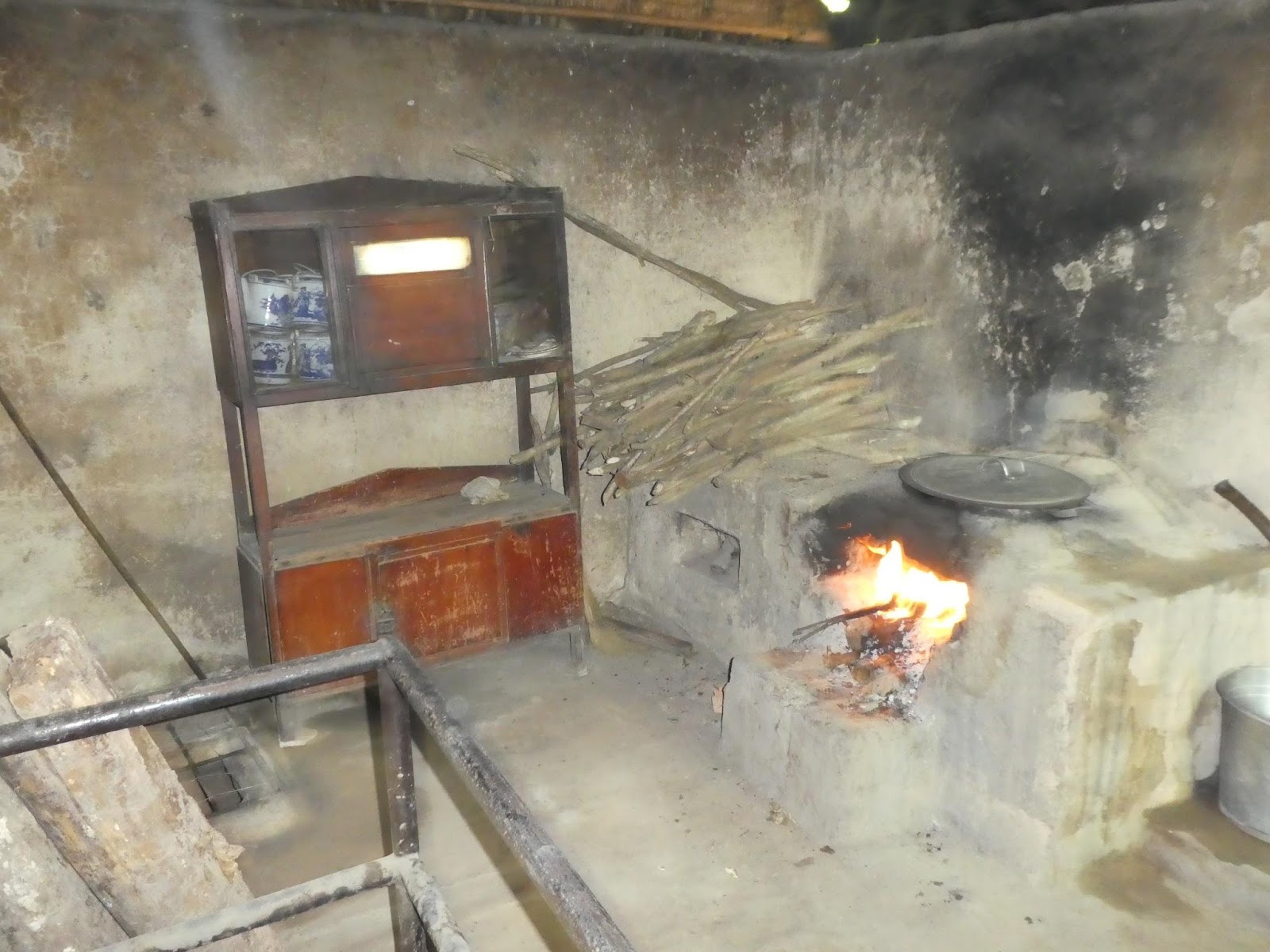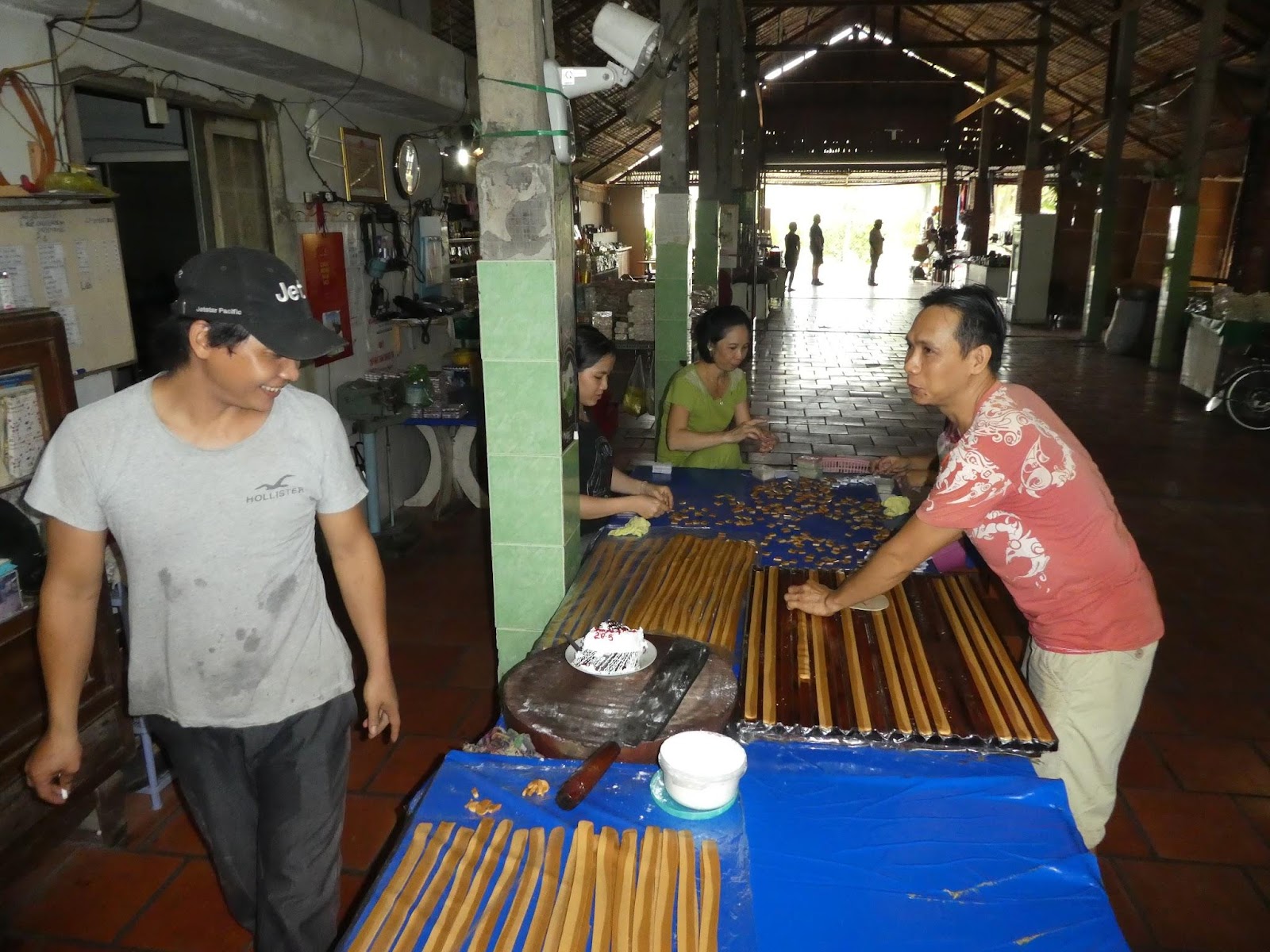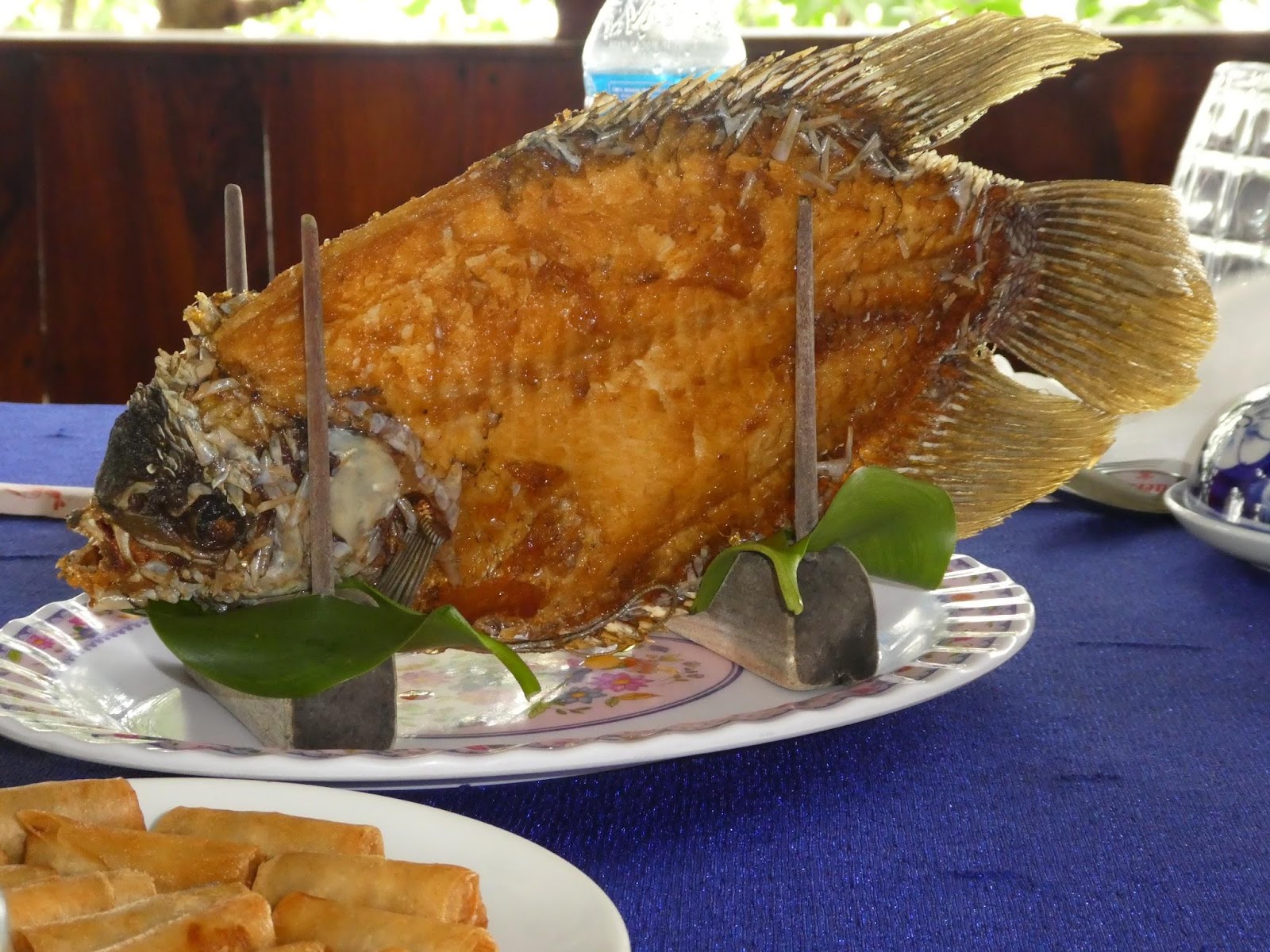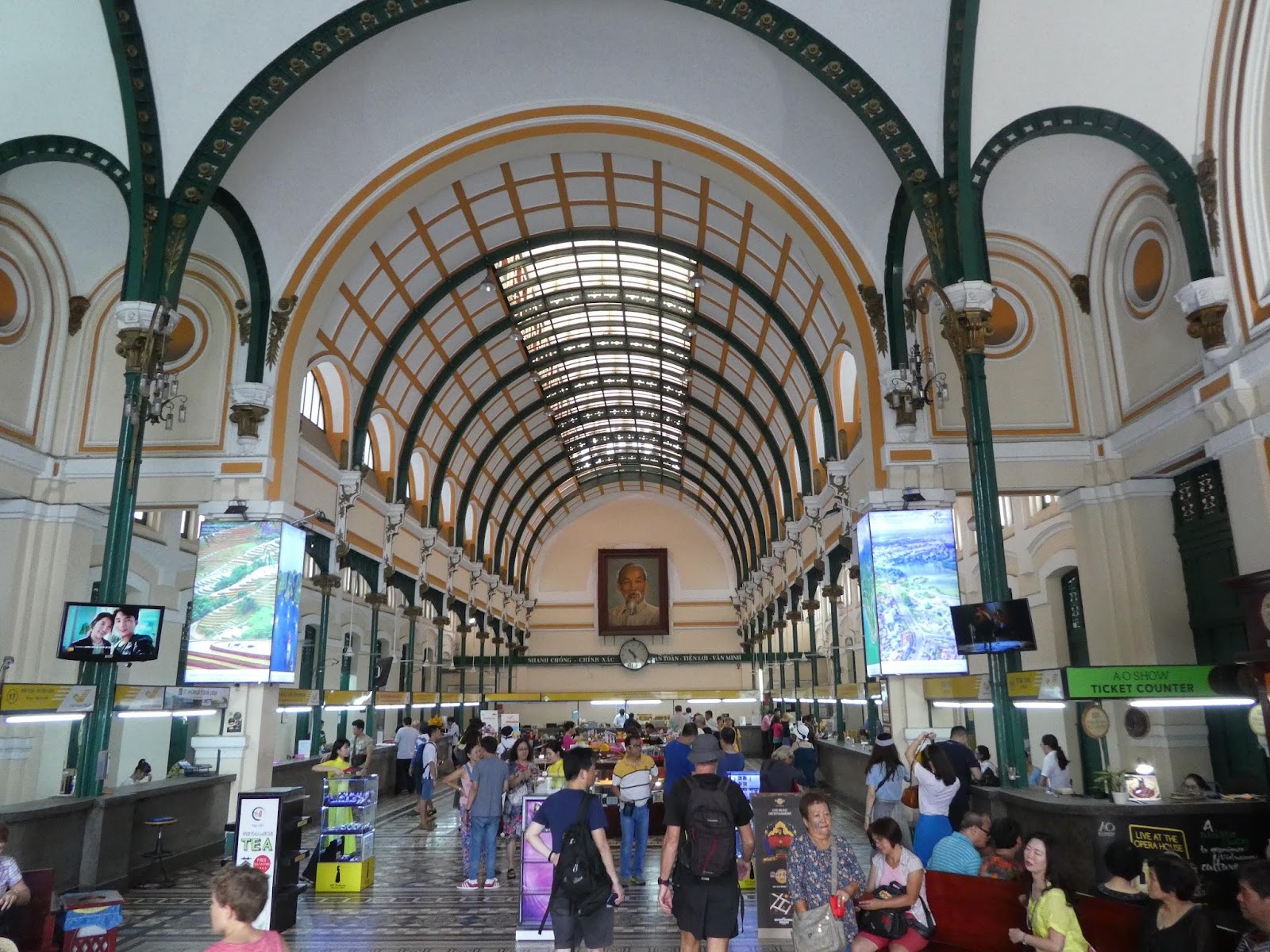19-23 May 2018
Ho Chi Minh City, Vietnam
By Katie and Eliza
For our first afternoon, after flying from Hoi An to Ho Chi Minh City, we spent the afternoon watching the Royal Wedding (Harry and Meghan), swimming in the rooftop pool until the fun was cut short by thunder, shopping at the Vinmart (a mini-mart on the first floor of our AirBNB apartment building), and the kids had a Ramen noodle taste testing session.
On Day 2, we went visited the Cu Chi Tunnels, about an hour north of Ho Chi Minh City. We went with a guide and driver. Our guide, Thanh, was just a few months into being a guide and quite enthusiastic and interested in history, which Brian and I enjoyed.
This is a photo of me entering one of the tunnels. They were very well hidden and only could be found by the South Vietnamese fighting for communism (Vietnam Liberation Front). The entrances had “addresses,” are some kind of signs to show their location.
Below is an email Eliza wrote to her Carroll class, when we got to Phu Quoc, our next stop after Ho Chi Minh City. It tells about our visit the Cu Chi tunnels.
Hi- ,
It is Eliza.It is VERY HOT here. Right now, I am in Phu Quoc or as I say it, Guacamole, Vietnam. My favorite place so far is Hoi An, because we rented motor bikes, two of them, and we made friends. Right now it is the rainy season. We do a lot of snorkeling here in Phu Quoc, because there are a lot of beaches.
This is Eliza’s mom. She wanted to write more but didn’t want to type, so I am typing and she is telling me what to write.
We are eating a lot of dragon fruit, Jack fruit, watermelon and mangoes. We usually have spring rolls. It is funny because in Vietnam, there are a lot of French fries. I think it’s because for a little while, the French took over Vietnam as a colony. And it is good because they have real toilets, not squat toilets. In China, they had squat toilets.
I didn’t know this, but Vietnam had an Emperor, but they called him a king. The French chose him but if he didn’t obey them, they would send him to an island. So the Emperor didn’t really have any power. The French were able to take over because one of the Emperors was so obsessed with poetry that he didn’t train his army well. So the army was not strong enough to fight the French army.
In Ho Chi Minh City, we went to the Cu Chi tunnels. We saw the kitchens, the hospitals, where they, the South Vietnamese communists (National Liberation Front), made the guns and bombs. All of these places were below ground, in the tunnels. The soldiers who lived in the tunnels were Southern Vietnamese people who were fighting for communism, fighting against the Americans and South Vietnamese army soldiers, who were fighting against communism.
The southern Vietnamese communist soldiers were sneaky and were called guerillas. They built the Cu Chi tunnels so they could hide and be safe and have stuff to eat. Once they go in the Cu Chi tunnels, they stay for 15 days and then come back out. They had hats with a pin to show that they were guerillas. The pin was their flag, that had red at the top, blue at the bottom, a star in the middle that was yellow. It was yellow because that was the color of their skin, our guide told us.
This is the communist flag:
Here is the Vietnamese flag now:
When the American soldiers found a tunnel, they were all scared to go in. They would pick straws for who had to go into the tunnel to search and look in the tunnel.
Sometimes the American soldiers would go in, look around and see stuff. Then they would go back the next day and all the stuff would be gone because the guerillas would move out. In the tunnels, there were traps. The tunnels might lead to a lake that would be poisoned.
I want to tell you about the booby traps but it is hard to explain. Please watch our Cu Chi so you can see them. Here is the link:
https://m.youtube.com/channel/UC1mFcWnAUzpJwDBqUdFc5uQ
I hope you are all having a good end of the year. I miss you guys. I am sort of getting sick of my family.
Love,Eliza

This is all of us climbing into another tunnel. The entrance has been enlarged so that Westerners can fit through. The actual tunnel entrances were so small that many American soldiers were not able to fit. The soldiers who were small enough were called “tunnel rats.” We were able to walk through 60 meters of the tunnel, hunched over. We probably could have gone further but the guide told us only the children would fit, because the tunnel further ahead was more narrow (not enlarged for tourists). We had expected to have to crawl and even Brian could walk, so we are not sure. We got the idea though. As we went further along, we went deeper underground.

The children as part of a huddle of soldiers (mannequins that looked very realistic) planning the next attack. Notice the flag pins on their hats, which Eliza describes in her email.

A kitchen in one of the tunnels. The smoke was diverted through a small chimney and would come out from the ground in a pile of leaves, so the tunnel would not be detected. They only cooked in the early morning or evening, so that the smoke blended with mist or fog.

A fun dinner at the Zoom Cafe. The most adventurous part was the walk from our apartment in District 8 to the restaurant in District 1 (central downtown area) - over a walking bridge, through busy streets, some without sidewalks because of construction. The restaurant was on a busy corner with lots of cars, buses and motorbikes going by. We ate french fries, which has been a staple in our southeastern asian diet (much to our surprise and the kids’ delight!) and hamburgers.

Day 2 in Ho Chi Minh City, we visited the Mekong Delta to see the floating market. We were disappointed to find out that the floating market really only happens in the early morning. We aren’t sure why to tour company advertised this as part of the tour. We did see these two houseboats and others, which had goods to sell. The families live on the boat and sell goods to people who live along the Mekong River, and to vendors who come in from the cities and then sell the goods in the city markets.

We stopped off at an area that shows how some of the local foods and handicrafts are made. Here they are making coconut caramel candies. We were able to taste a sample of each flavor. The flavors included pandan fruit, durian fruit, chocolate (that didn’t have much chocolate taste), and plain coconut. Overall, we liked the plain coconut the best and bought a package of them. Between the five of us, we probably ate a package-worth of samples, too!

Here we are trying the puffed rice “popcorn.” They heat it up in a big wok looking pot with river sand, which is very hot and makes the rice kernels pop. Then they strain out the sand and we ate the popped rice, which was quite good and a little sandy!

Snake wine for sale! This we did not try.

Cruising along the Mekong River. We were happy to have the breeze (not so cool) from the moving boat.

We transferred to a sampan boat, and wore conical hats! We were paddled around by this local woman, who somehow was not hot, through some back tributaries of the Mekong River.

Lydia showing off the gaps from her two newly lost teeth!! Hayden also lost a tooth on this actual day, while eating all the coconut caramel samples!

Eliza in her conical hat. Is she giving a mysterious look, or is she just annoyed that it is so hot?!

The centerpiece of our fancy Mekong Delta lunch. Brian was happy eat this guy! The rest of us had a polite taste and then moved on to the noodle soup.

Whoa, Hayden! Watch where you are cartwheeling!

A view of Saigon from the rooftop pool.

“Mot, Hai, Ba, Zo!” with our Ba Ba Ba beers.
We learned to say “one, two, three, cheers!” during our street food tour in Hanoi. The Hanoi local beer is Bia Ha Noi, and in Saigon, the local beer is Ba Ba Ba (333). The other local beer is called “Saigon.” The slightly more expensive ($1 vs $0.50 per can) Vietnamese beer is “Tiger.” We have tried them all. All taste like the fraternity keg beer, if my memory serves me right. Watery but good if the beer is cold and the weather is hot!
This is during dinner in our AirBNB apartment. We ate noodle soup (ramen) and yogurt from the Vinmart. To see the kids’ ramen noodle taste test, check out the YouTube vlog.
Generally, if we have had a kitchen, we have cooked one meal (or two if breakfast not included), and gone out for one meal.

Day 3 in Ho Chi Minh City was half day tour of the city. This is Independence Palace (or Reunification Hall), on the site of the former Norodom Palace.
A quick historical summary:
France invaded Vietnam in 1858. The palace construction (built in French architectural style) was started in 1868, a year after Vietnam became a French colony, and was the residence and office of the French Governor of Cochinchina. The palace was named for the then king of Cambodia, Norodom (1834-1904). From 1887 to 1945, all Governors-General of French Indochina used the palace as their residence and office.
During World War II, the Japanese took over Vietnam from March until September 1945. Then when the Japanese surrendered to the Allied Forces, France returned and again used the palace as their colonial headquarters.
Sometimes the American soldiers would go in, look around and see stuff. Then they would go back the next day and all the stuff would be gone because the guerillas would move out. In the tunnels, there were traps. The tunnels might lead to a lake that would be poisoned.
I want to tell you about the booby traps but it is hard to explain. Please watch our Cu Chi so you can see them. Here is the link:
https://m.youtube.com/channel/UC1mFcWnAUzpJwDBqUdFc5uQ
I hope you are all having a good end of the year. I miss you guys. I am sort of getting sick of my family.
Love,Eliza
This is all of us climbing into another tunnel. The entrance has been enlarged so that Westerners can fit through. The actual tunnel entrances were so small that many American soldiers were not able to fit. The soldiers who were small enough were called “tunnel rats.” We were able to walk through 60 meters of the tunnel, hunched over. We probably could have gone further but the guide told us only the children would fit, because the tunnel further ahead was more narrow (not enlarged for tourists). We had expected to have to crawl and even Brian could walk, so we are not sure. We got the idea though. As we went further along, we went deeper underground.
The children as part of a huddle of soldiers (mannequins that looked very realistic) planning the next attack. Notice the flag pins on their hats, which Eliza describes in her email.
A kitchen in one of the tunnels. The smoke was diverted through a small chimney and would come out from the ground in a pile of leaves, so the tunnel would not be detected. They only cooked in the early morning or evening, so that the smoke blended with mist or fog.
A fun dinner at the Zoom Cafe. The most adventurous part was the walk from our apartment in District 8 to the restaurant in District 1 (central downtown area) - over a walking bridge, through busy streets, some without sidewalks because of construction. The restaurant was on a busy corner with lots of cars, buses and motorbikes going by. We ate french fries, which has been a staple in our southeastern asian diet (much to our surprise and the kids’ delight!) and hamburgers.
Day 2 in Ho Chi Minh City, we visited the Mekong Delta to see the floating market. We were disappointed to find out that the floating market really only happens in the early morning. We aren’t sure why to tour company advertised this as part of the tour. We did see these two houseboats and others, which had goods to sell. The families live on the boat and sell goods to people who live along the Mekong River, and to vendors who come in from the cities and then sell the goods in the city markets.
We stopped off at an area that shows how some of the local foods and handicrafts are made. Here they are making coconut caramel candies. We were able to taste a sample of each flavor. The flavors included pandan fruit, durian fruit, chocolate (that didn’t have much chocolate taste), and plain coconut. Overall, we liked the plain coconut the best and bought a package of them. Between the five of us, we probably ate a package-worth of samples, too!
Here we are trying the puffed rice “popcorn.” They heat it up in a big wok looking pot with river sand, which is very hot and makes the rice kernels pop. Then they strain out the sand and we ate the popped rice, which was quite good and a little sandy!
Snake wine for sale! This we did not try.
Cruising along the Mekong River. We were happy to have the breeze (not so cool) from the moving boat.
We transferred to a sampan boat, and wore conical hats! We were paddled around by this local woman, who somehow was not hot, through some back tributaries of the Mekong River.
Lydia showing off the gaps from her two newly lost teeth!! Hayden also lost a tooth on this actual day, while eating all the coconut caramel samples!
Eliza in her conical hat. Is she giving a mysterious look, or is she just annoyed that it is so hot?!
The centerpiece of our fancy Mekong Delta lunch. Brian was happy eat this guy! The rest of us had a polite taste and then moved on to the noodle soup.
Whoa, Hayden! Watch where you are cartwheeling!
A view of Saigon from the rooftop pool.
“Mot, Hai, Ba, Zo!” with our Ba Ba Ba beers.
We learned to say “one, two, three, cheers!” during our street food tour in Hanoi. The Hanoi local beer is Bia Ha Noi, and in Saigon, the local beer is Ba Ba Ba (333). The other local beer is called “Saigon.” The slightly more expensive ($1 vs $0.50 per can) Vietnamese beer is “Tiger.” We have tried them all. All taste like the fraternity keg beer, if my memory serves me right. Watery but good if the beer is cold and the weather is hot!
This is during dinner in our AirBNB apartment. We ate noodle soup (ramen) and yogurt from the Vinmart. To see the kids’ ramen noodle taste test, check out the YouTube vlog.
Generally, if we have had a kitchen, we have cooked one meal (or two if breakfast not included), and gone out for one meal.
Day 3 in Ho Chi Minh City was half day tour of the city. This is Independence Palace (or Reunification Hall), on the site of the former Norodom Palace.
A quick historical summary:
France invaded Vietnam in 1858. The palace construction (built in French architectural style) was started in 1868, a year after Vietnam became a French colony, and was the residence and office of the French Governor of Cochinchina. The palace was named for the then king of Cambodia, Norodom (1834-1904). From 1887 to 1945, all Governors-General of French Indochina used the palace as their residence and office.
During World War II, the Japanese took over Vietnam from March until September 1945. Then when the Japanese surrendered to the Allied Forces, France returned and again used the palace as their colonial headquarters.
In 1954, France agreed to withdraw from Vietnam under the Geneva Accords. Vietnam was split into North Vietnam (communist) and South Vietnam (anti-communist). The palace was then used by the South Vietnam Prime Minister, Ngo Dinh Diem, who later declared himself the president of the newly proclaimed Republic of Vietnam. He named the palace the Independence Palace. In 1962, two pilots from Diem’s air force rebelled and flew over the palace, dropping bombs that destroyed the entire left wing of the palace. Diem and his family escaped the assassination attempt. But the palace was so damaged that Diem decided to demolish it and rebuild under the design of a Vietnamese architect, Ngo Viet Thu. The new palace was in the Feng Shui style.
In 1963, General of the South Vietnam forces, Nguyen Van Thieu, took over after a coup d’etat in which Diem and his brother were assassinated. He led from and lived in the palace until 1975. A pilot of the South Vietnamese air force, who was actually a communist spy, bombed the palace in April 1975, but caused no significant damage. In November 1975, a North Vietnamese army tank drove through the main gate of the Palace, officially marking the end of the war. Upon overtaking the city of Saigon, the communist government renamed the city Ho Chi Minh City and eventually renamed the palace, Reunification Hall.
If you look at the facade of Independence Palace/Reunification Hall, you can see several Chinese characters, including one that means Master (leader) or if you take away the flag on top of the building, it means King to signify sovereignty; another means center to signify the leader’s responsibilities; another is three, representing the three tenets of humanity, boldness and wisdom; also, mouth, representing high standards of education and freedom of speech; lastly, the character for prosperity can be seen. The layout of the entire building is the shape of the character meaning good luck.

This is the room where official guests were entertained. Henry Kissinger was here during the Vietnam American War.

Here is the cinema, on the top floor of the palace, along with a game room with Mahjong tables, pool tables and a bar.

This room was The President’s War room, in the basement of the palace, in a bomb shelter, along with the communications rooms, the war planning rooms and other war headquarter rooms.

The Saigon Central Post Office which was designed by the Chief Architect of the Colony, Alfred Foulhoux. It is thought by most, including our guide, that Gustave Eiffel was the architect but according to the internet, that is incorrect!
Now it is a tourist hub and a functional post office! Notice the huge portrait of Ho Chi Minh.

We visited the War Remnants Museum which displays photographs from the war, as well as some of the tanks and aircraft. One room is dedicated to Agent Orange victims, showing photographs and the victims’ stories. There is also a room where a man who is a victim of Agent Orange was creating beaded souvenirs. His hands, arms, feet and legs were not properly formed and he used one foot and two arms to balance and bead. We bought some dragonfly keychains.

Now a cake taste test. It turns out, Hayden thought it was ice cream cake and the girls and Brian had other desserts. So it was just me (Katie) doing the tasting! Yay - until I got a belly ache!

Flying off to Phu Quoc Island!
This is the room where official guests were entertained. Henry Kissinger was here during the Vietnam American War.
Here is the cinema, on the top floor of the palace, along with a game room with Mahjong tables, pool tables and a bar.
This room was The President’s War room, in the basement of the palace, in a bomb shelter, along with the communications rooms, the war planning rooms and other war headquarter rooms.
The Saigon Central Post Office which was designed by the Chief Architect of the Colony, Alfred Foulhoux. It is thought by most, including our guide, that Gustave Eiffel was the architect but according to the internet, that is incorrect!
Now it is a tourist hub and a functional post office! Notice the huge portrait of Ho Chi Minh.
We visited the War Remnants Museum which displays photographs from the war, as well as some of the tanks and aircraft. One room is dedicated to Agent Orange victims, showing photographs and the victims’ stories. There is also a room where a man who is a victim of Agent Orange was creating beaded souvenirs. His hands, arms, feet and legs were not properly formed and he used one foot and two arms to balance and bead. We bought some dragonfly keychains.
Now a cake taste test. It turns out, Hayden thought it was ice cream cake and the girls and Brian had other desserts. So it was just me (Katie) doing the tasting! Yay - until I got a belly ache!
Flying off to Phu Quoc Island!

No comments:
Post a Comment